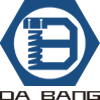Tapping screws only began to be commercialized in 1914. The first design was mainly inspired by wood screws. At that time, it was mainly used for the bonding of iron sheet on the conduit of air-conditioning system, so it was also called tin screw. After more than 80 years of development, it can be divided into four periods: thread forming, thread cutting, thread rolling and self-drilling.
Classification and characteristics of self tapping screws: cross recessed pan head, countersunk head, cushion, umbrella head, tail cutting, triangular teeth, etc.
1. Self-tapping generally refers to pointed, coarse-toothed, hard wood screws, as well as aluminum and plastic screws. A special self-tapping screw used for opening threads in metal holes is called tapping.
2. for non-metal or softer metal, there is no need for bottom hole and tapping; because it is pointed, it can be “self-tapping”; ordinary screws are flat-headed and of the same thickness.
3. The hole drilled is a hole without tapping teeth, and the screws used are different from the general ones. The head is pointed and the tooth spacing is relatively large, so it can be rotated directly without tapping teeth. Metal and plastic usually use this method.
4. It can be “drilled and extruded” by the consolidated body on the consolidated material, depending on its own thread.
Characteristics of screws:
Self-tapping screw is a kind of threaded fastener in pre-drilling of metal or non-metallic material. It has the characteristics of high tension, single piece and one-sided combination. Because of its self-forming or tapping out of its mating thread, it has high anti-loosening ability in combination and can be loaded and unloaded. On the small screw, its size, thread type, head type and tapping performance are almost unlimited in engineering application.
Post time: Apr-11-2023
